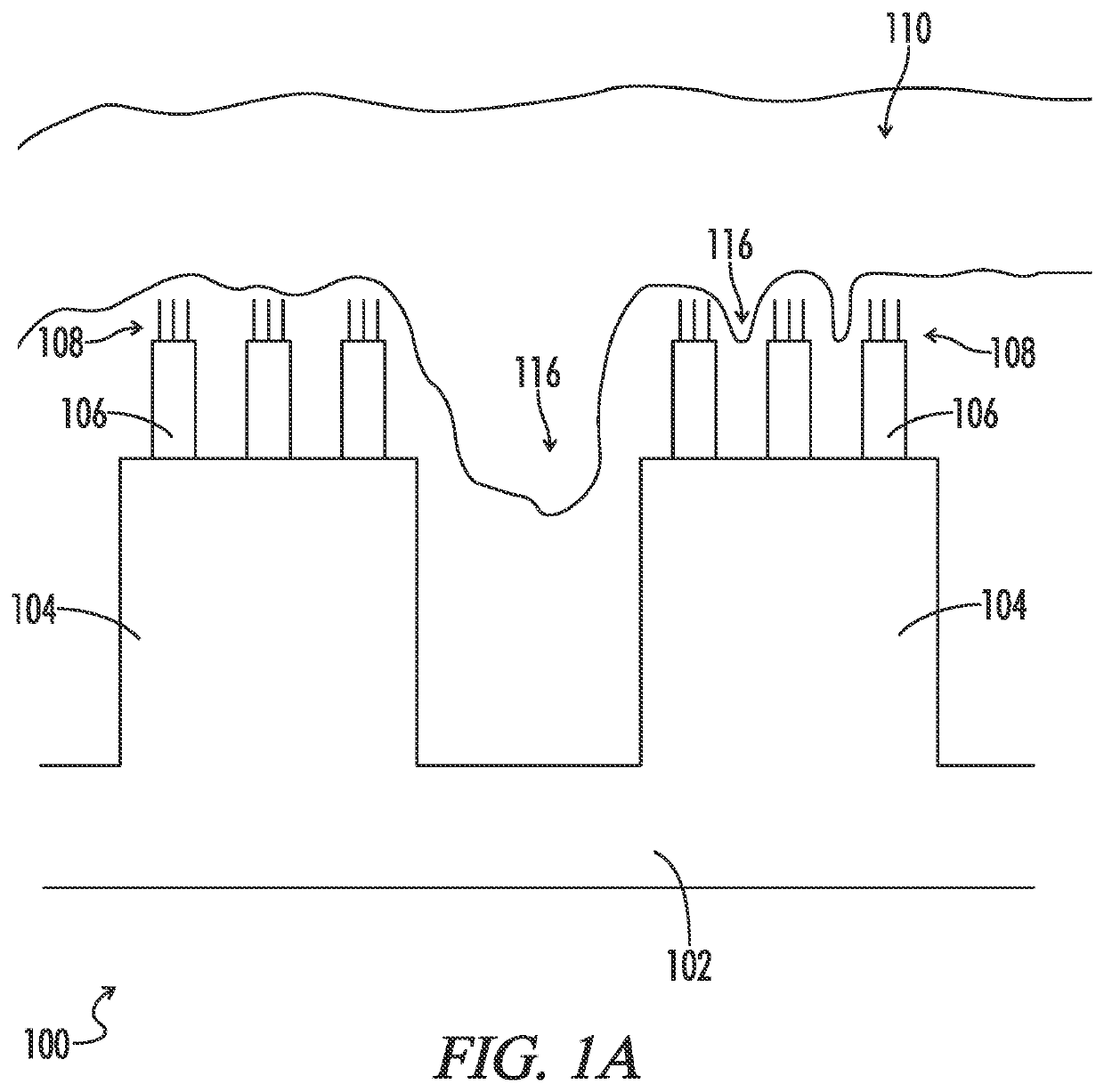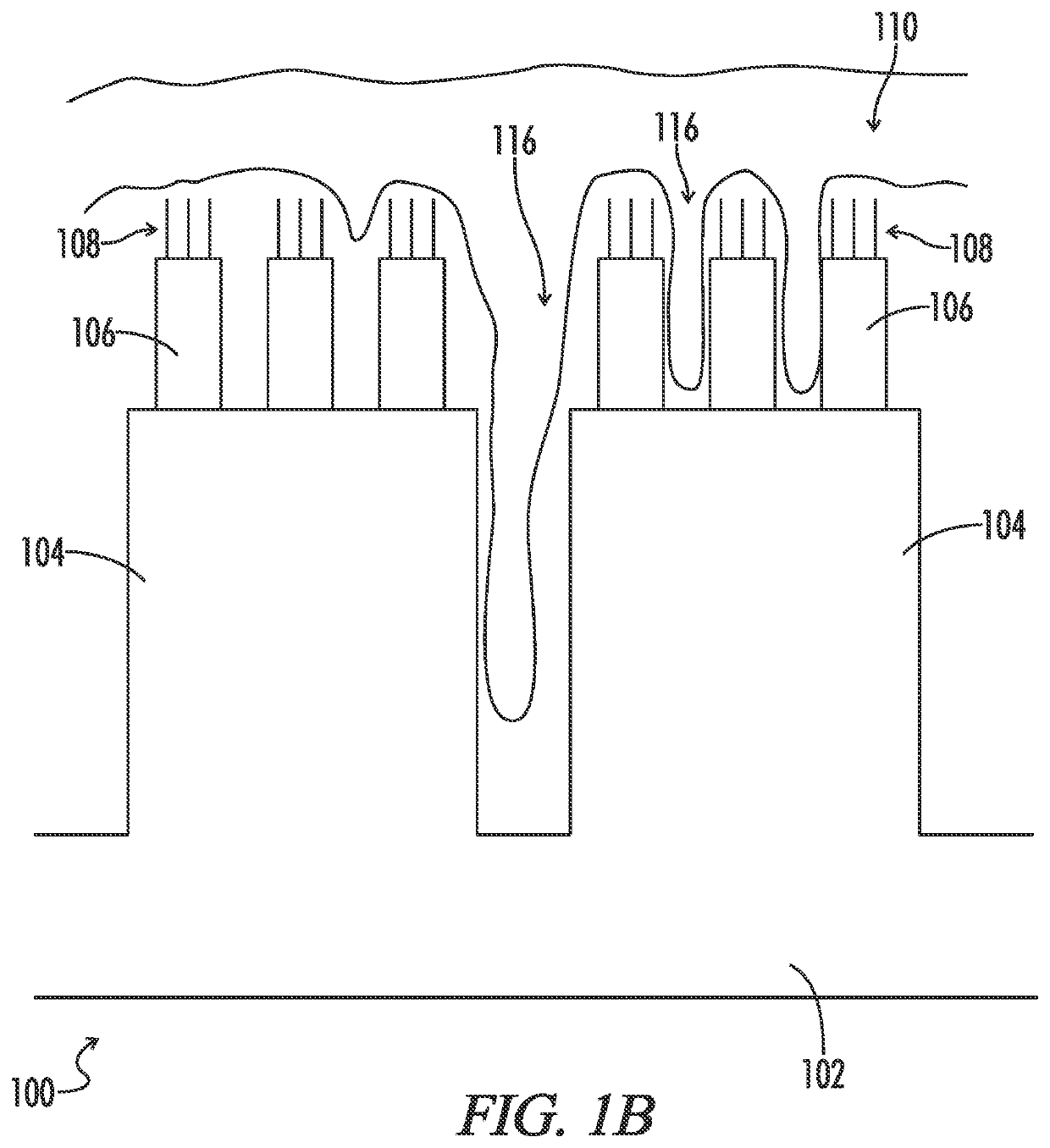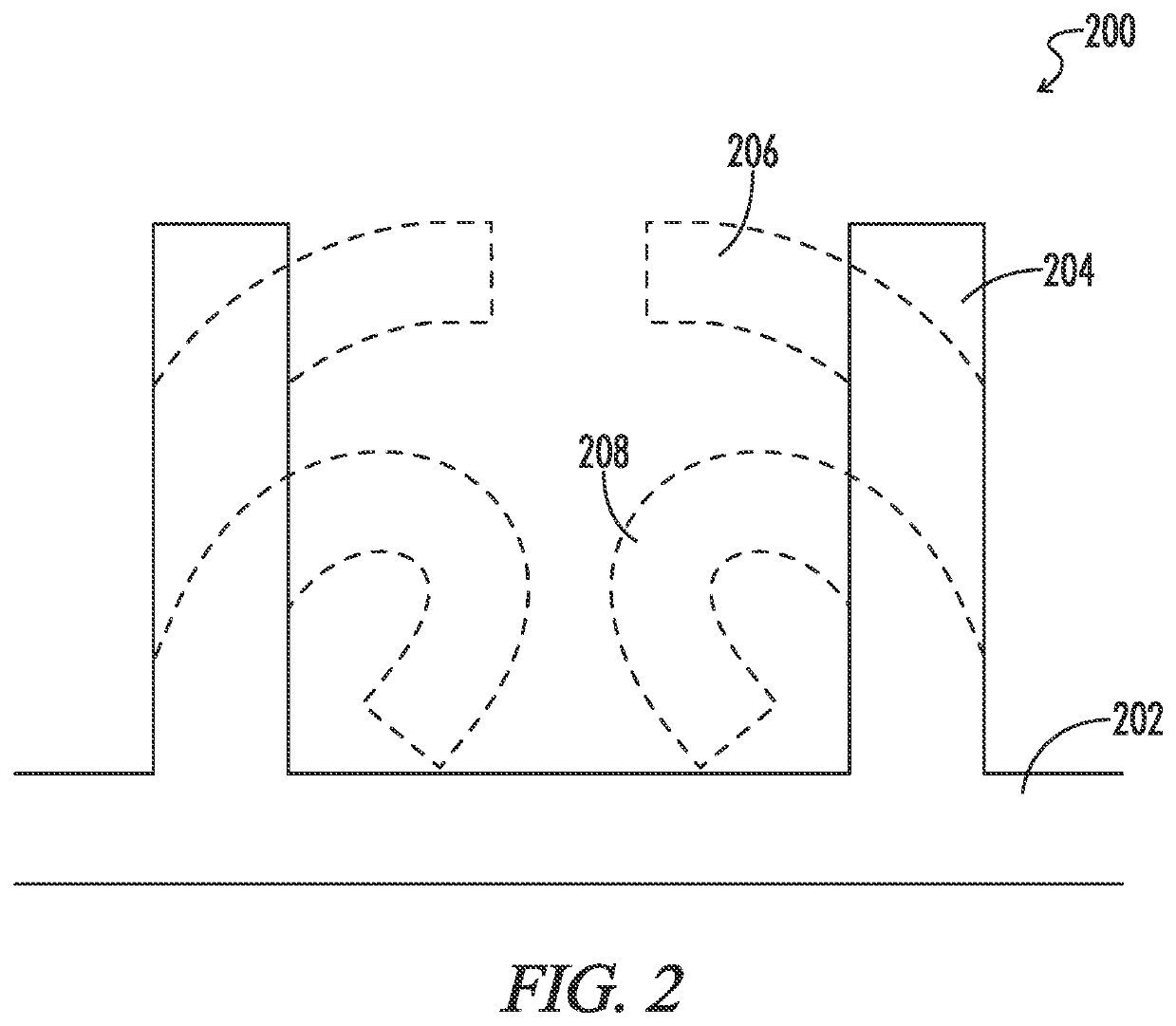Expansion mediated adhesive device
- Summary
- Abstract
- Description
- Claims
- Application Information
AI Technical Summary
Benefits of technology
Problems solved by technology
Method used
Image
Examples
example 1
[0103]Referring to FIG. 2, an expansion mediated adhesion device 200 may include a non swellable substrate 202 on which may be printed or cast a swellable microstructure 204. Printing techniques are well known in the art. The casting technique may involve forming the substrate 202 and microstructure 204 by coating one side of the substrate with a curable swellable polymer and then sandwiching against the mold the curable polymer between the substrate and the mold. The mold may be manufactured to produce the microstructure 204 from the curable swellable polymer. Microstructure 204 may be a cylindrical pillar of 10 to 1000 microns, preferably 50 to 200 microns, with a pitch of between 10 microns and 100 microns, and a diameter of 10 to 50 microns. Due to edge effects, the center of the pillar may be more densely cross linked then the exterior surfaces.
[0104]When the microstructure is exposed to water, or some other liquid, the outer surface may swell more than the interior causing the...
example 2
[0105]Referring to FIG. 3, an expansion mediated adhesion device 300 may include substrate 302, first swellable microfeature 304, 310 on which is arranged hierarchically a second non-swellable microfeature 306. Upon non-swellable microfeature 306 may be arranged a third non-swellable microfeature 308. When the first swellable microfeature 304, 310 swells it may obtain a swollen geometry 312 as depicted by the dashed line. The second microfeature 306 of adjacent microstructures may be displaced toward one another at an intersecting position 314 via the swelling of the first microfeature 304, 310. When two adjacent second microfeatures 306 come together, a pincer motion may be generated which may be capable of grasping a surface placed in the vicinity of device 300.
example 3
[0106]Referring to FIG. 4, an expansion mediated adhesion device 400 may include substrate 402 and non-swellable first microfeature 404. A second swellable microfeature 406 may be disposed about the substrate 402 adjacent the first microfeature 404. The spacing of the first 404 and second microfeature 406 may generate a hydrophilic surface energy that draws a target layer into a domain region 408. If the target substrate is fibrous, then fiber(s) may fill the domain region 408. Fluid on the surface of the target surface may cause the second microfeatures 406 to expand. The surfaces 410 of the polymerized polymer of the second microfeatures 406 may include a highly crosslinked skin. This skin surface 410 may produce an effect common to many crosslinking polymers. The expansion rate and capacity of the skin surface 410 may be less than the interior portion 412. This may cause the second microfeature 406 to bend as depicted by dashed lines 414. The bending direction may be random or ma...
PUM
| Property | Measurement | Unit |
|---|---|---|
| Diameter | aaaaa | aaaaa |
| Diameter | aaaaa | aaaaa |
| Height | aaaaa | aaaaa |
Abstract
Description
Claims
Application Information
 Login to View More
Login to View More - R&D
- Intellectual Property
- Life Sciences
- Materials
- Tech Scout
- Unparalleled Data Quality
- Higher Quality Content
- 60% Fewer Hallucinations
Browse by: Latest US Patents, China's latest patents, Technical Efficacy Thesaurus, Application Domain, Technology Topic, Popular Technical Reports.
© 2025 PatSnap. All rights reserved.Legal|Privacy policy|Modern Slavery Act Transparency Statement|Sitemap|About US| Contact US: help@patsnap.com



